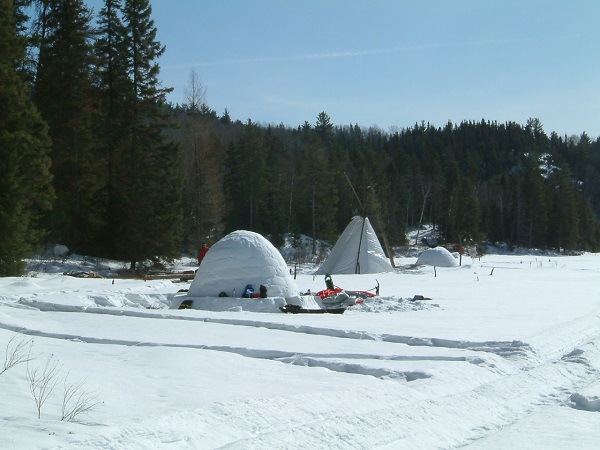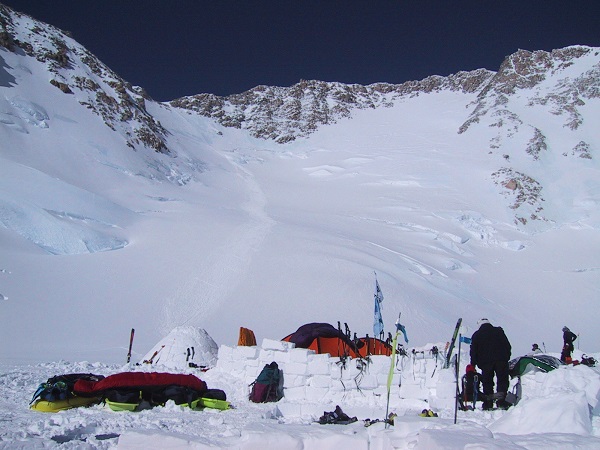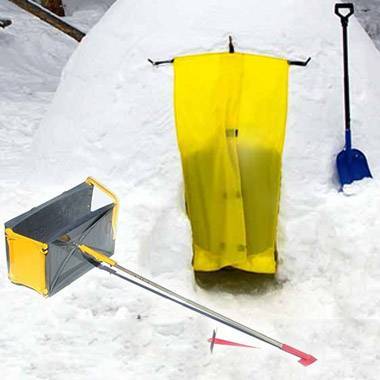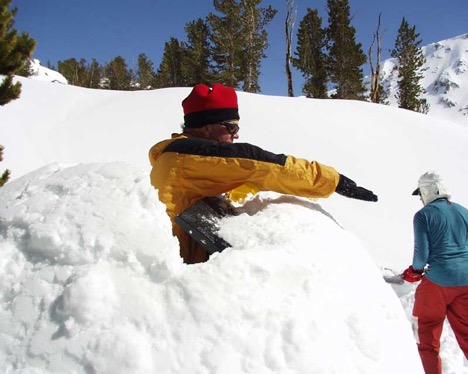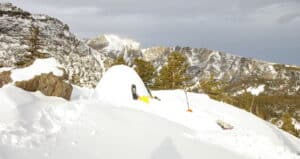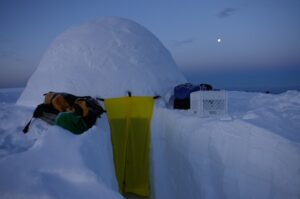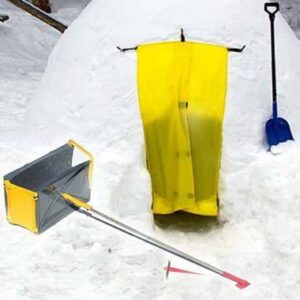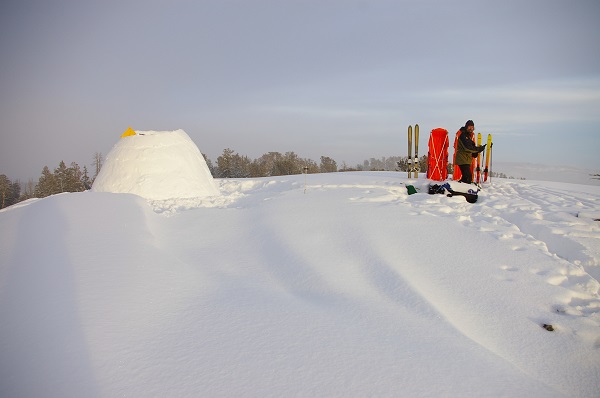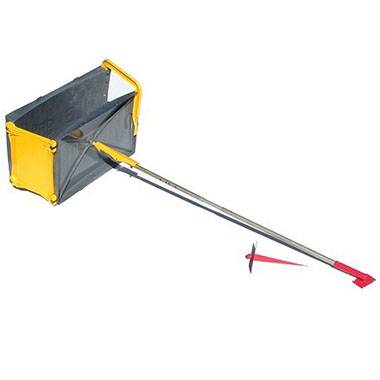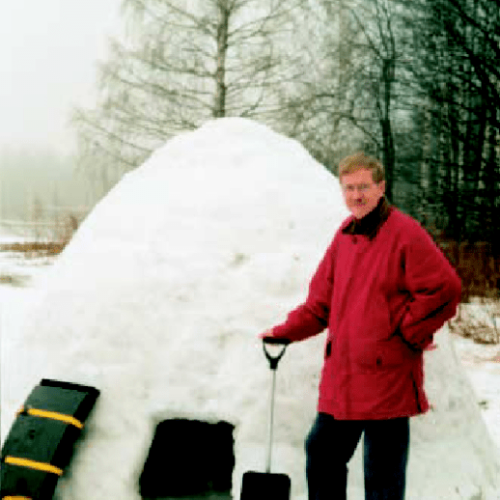Igloo Site Selection
The easiest place to build your igloo is a flat open area with a snow depth around 2½ to 3ft. That snow depth will help prevent damage to underlying vegetation and provide plenty of snow to build the igloo.
If the snow is less than 2 ft. deep, you may want to pile some of the surrounding snow onto the platform in order to have a platform that is 12 to 18 inches deep so that you can later cut out a trench. This way you can sit without being cross-legged and stand fully upright if desired.
The igloo likes shade from 10:00 am to 2:00 pm. A spot with trees is better than in the shade of a mountain for being able to enjoy the sun. If you are above the trees, it doesn’t matter so much as it is colder up there but the sun will still have some influence on the igloo. Building in the trees does stop some of the sublimation of the igloo from being out of the wind. Drifting snow can bury the igloo quickly in the wrong spot and it doesn’t drift in the trees. The trees will take away the chance for a room with a view though so higher is what Igloo Ed prefers.
It is easiest to pack down a platform with skis or snowshoes, but your igloo will last longer if you pack with your boots and bust down through the snow as deep as possible and then pack your way up and out of the snow.
Pack a level area three feet in diameter bigger than the igloo size you are building. This is large enough to leave a 10 inch ledge around the outside of the igloo that you will need for standing on when working on the higher levels of the igloo. This ledge is critical and is easily taken away by the shoveler when picking up snow while building the igloo.
While packing the platform, keep in mind that it’s important that you make the center of the platform solid so that the stake will not shift once you’ve planted it. It is best if you pack the center of the platform as early as possible giving the snow more time to sinter and become solid. Pack the stake area by stomping as deep as you can in the center of the platform and start packing your way up and out of the hole you have stomped. It is also best if you avoid walking on this area as you are leveling and packing the platform and assembling the ICEBOX® so you don’t fracture the area.
Although a flat area is easiest for building the igloo, you may choose to build someplace with a slope so the door can come out below the igloo and not be down in a hole. It is energy saving to have the door below the igloo and not have a hole to climb out of when exiting the igloo. If you go this route, build on a flat area that has a drop off along it. If there is no flat area with an accompanying slope along it, build on a slant. Keep in mind that it takes considerably more energy to build the platform and the igloo when on a slope but a lot of the energy is gained back because of the ease of exiting the igloo and the ease of shoveling off the walk.
When building where the site is sloped, pack the downhill side of the platform first. One person should keep walking along the downhill edge while a shoveler moves snow from the high side and down into the packer’s footsteps. It also saves a lot of energy if you push the snow whenever possible instead of lifting and throwing the snow.
If you do build on a flat area and you have steps going down into a trench, keep in mind that if you are in the wind, your trench will fill with snow and be difficult to dig out. A short level trench that comes out the side of a slope is much easier to remove snow from.

